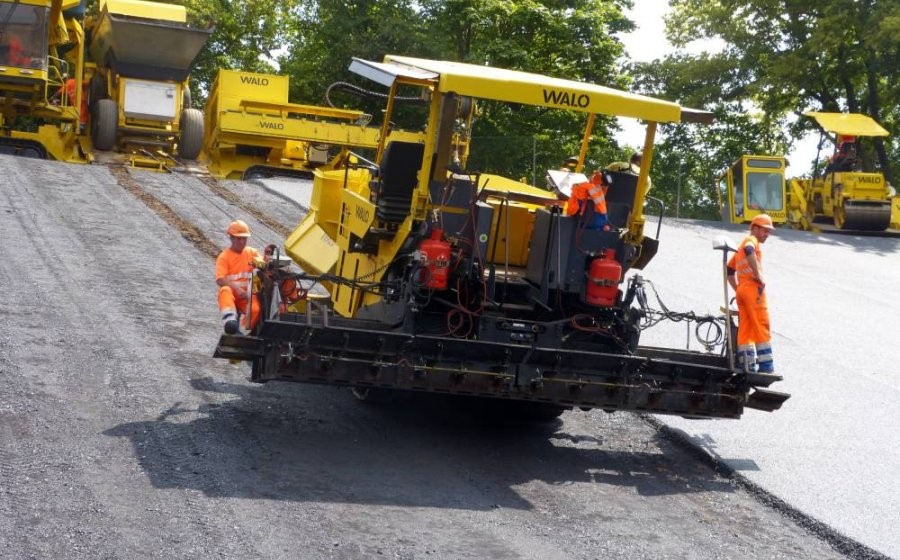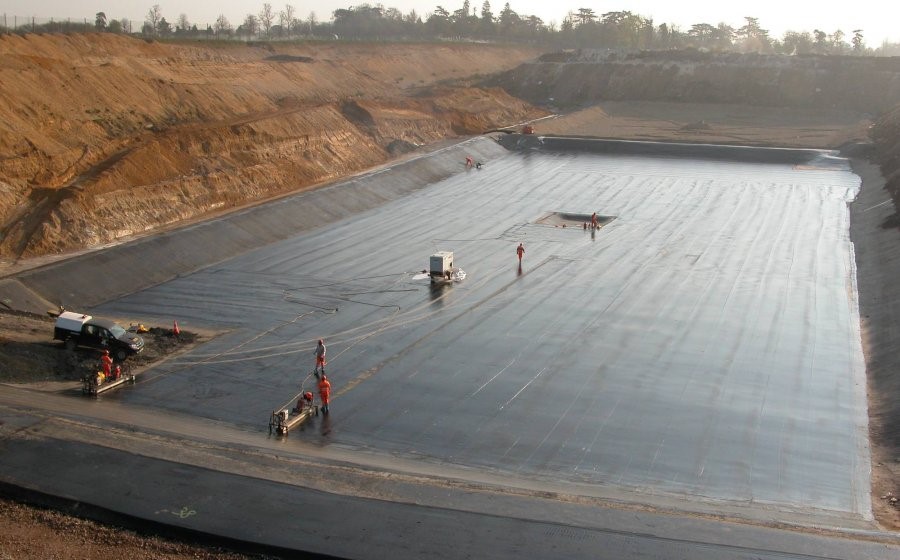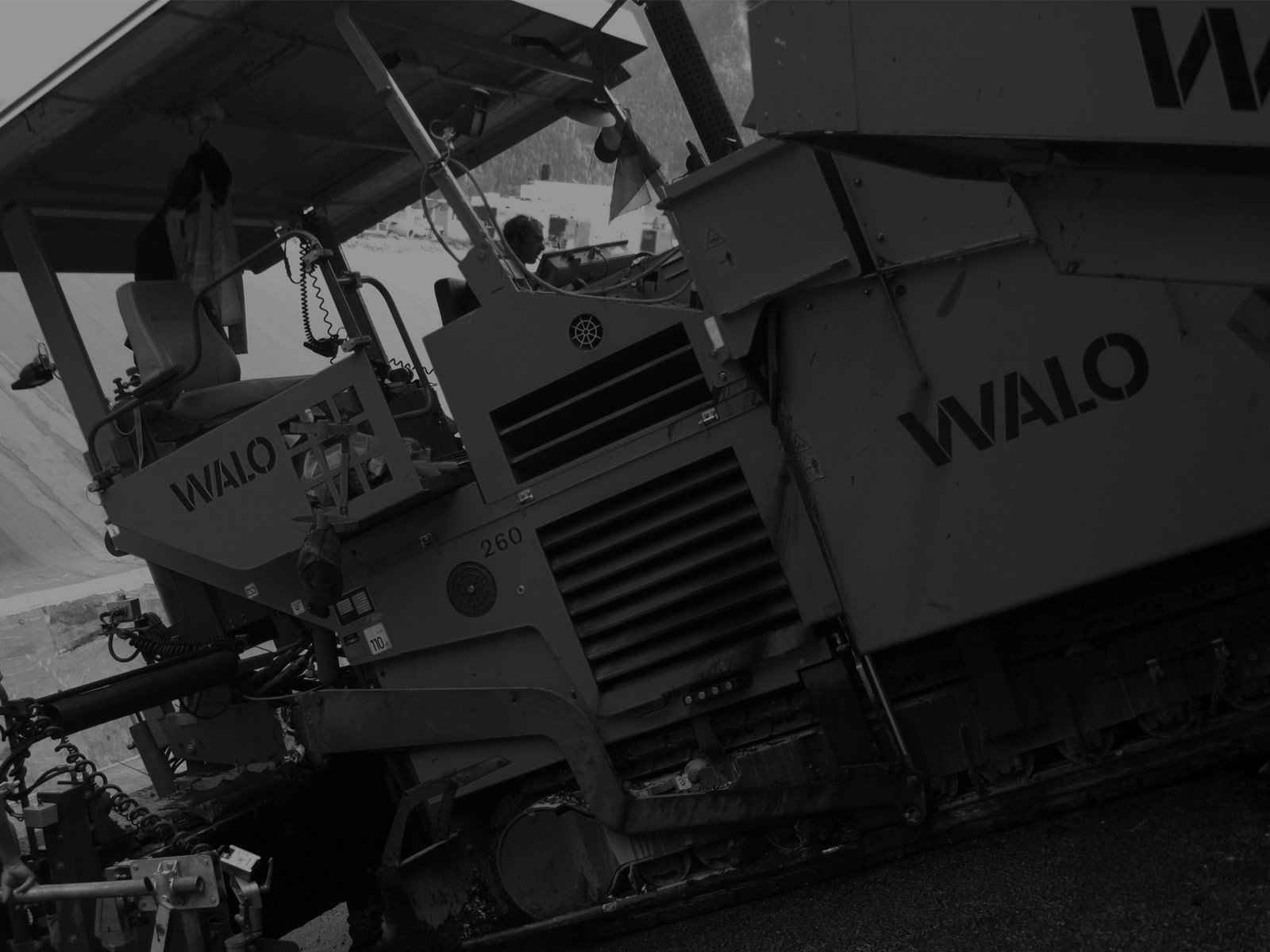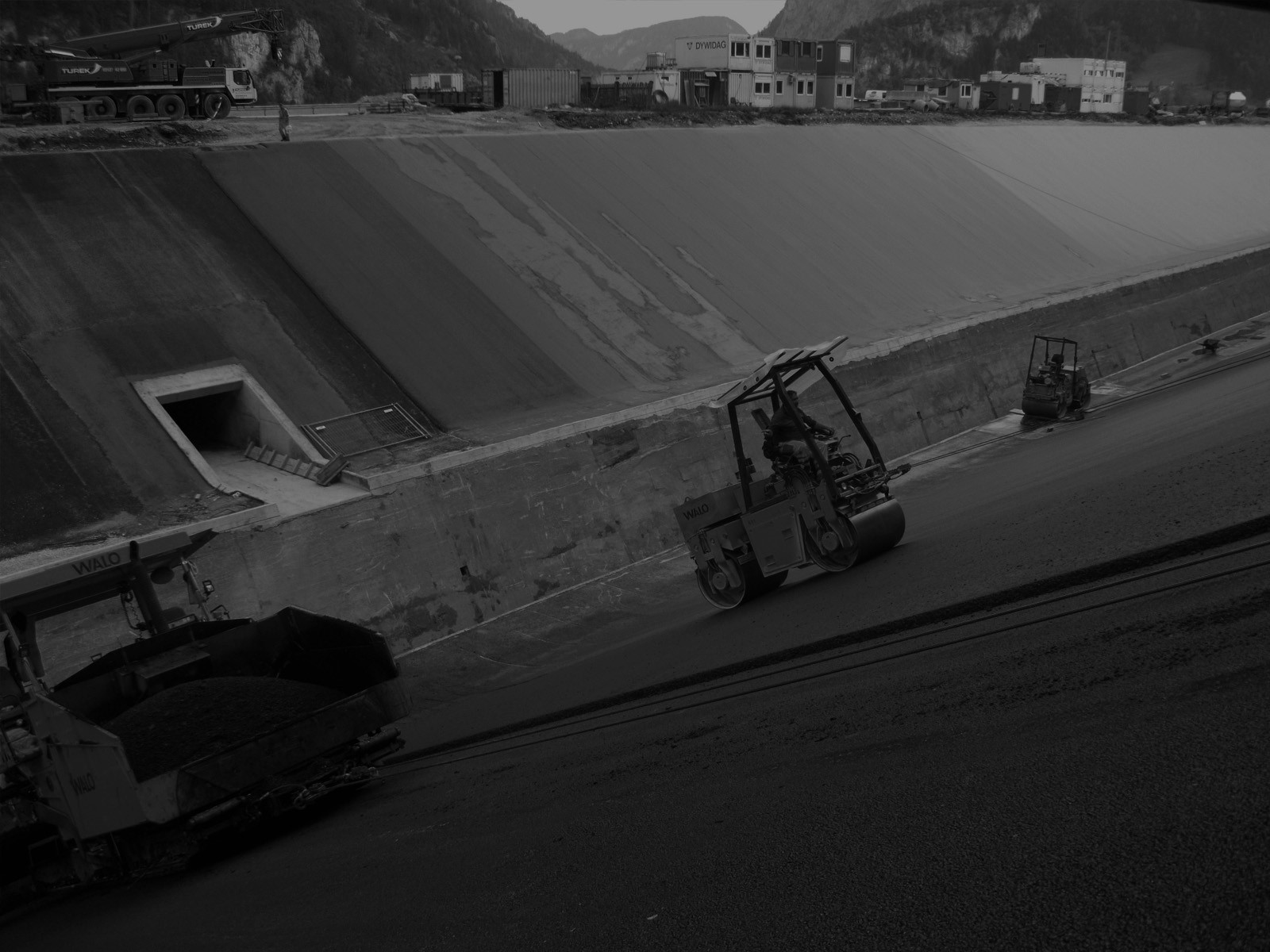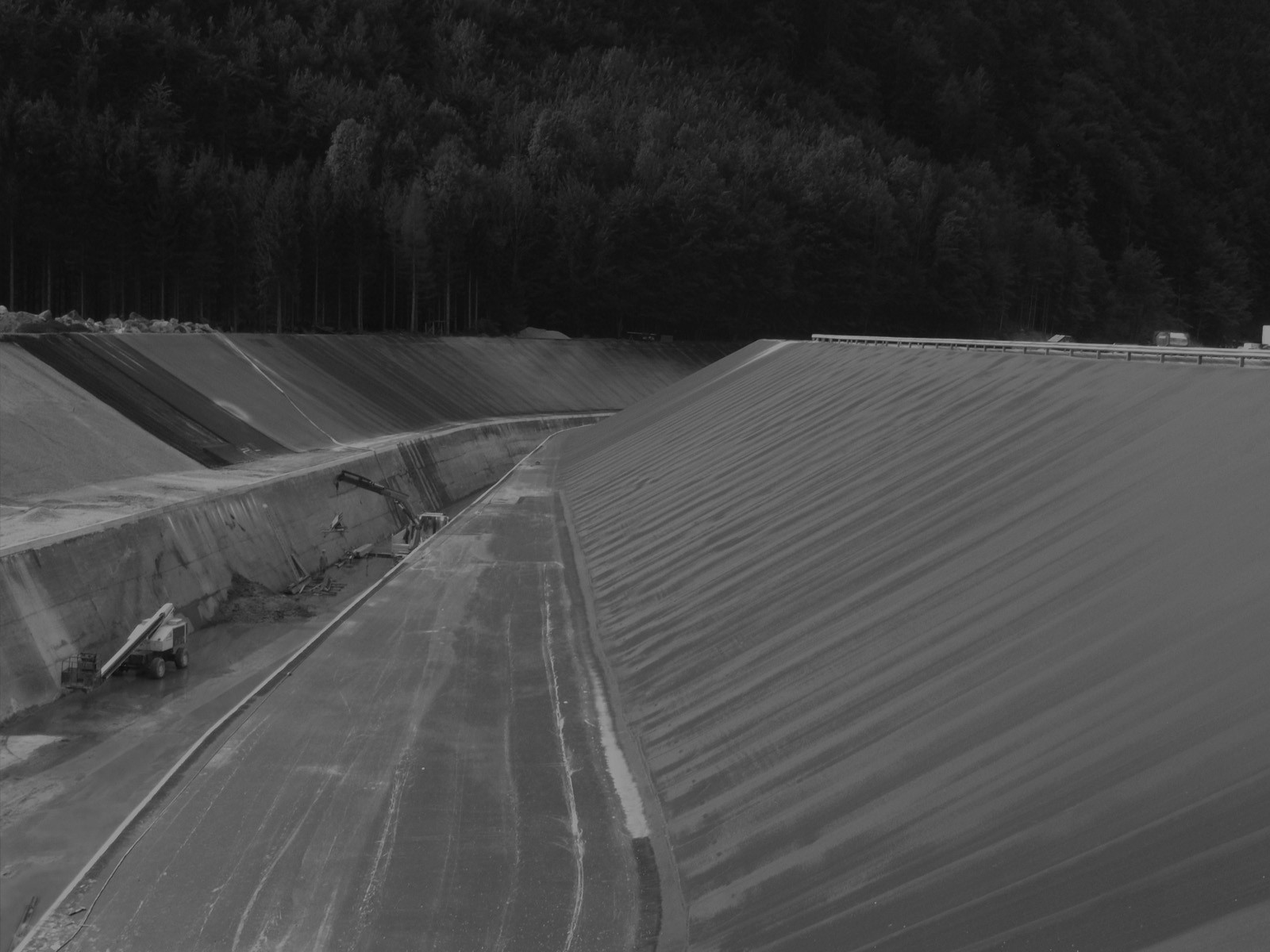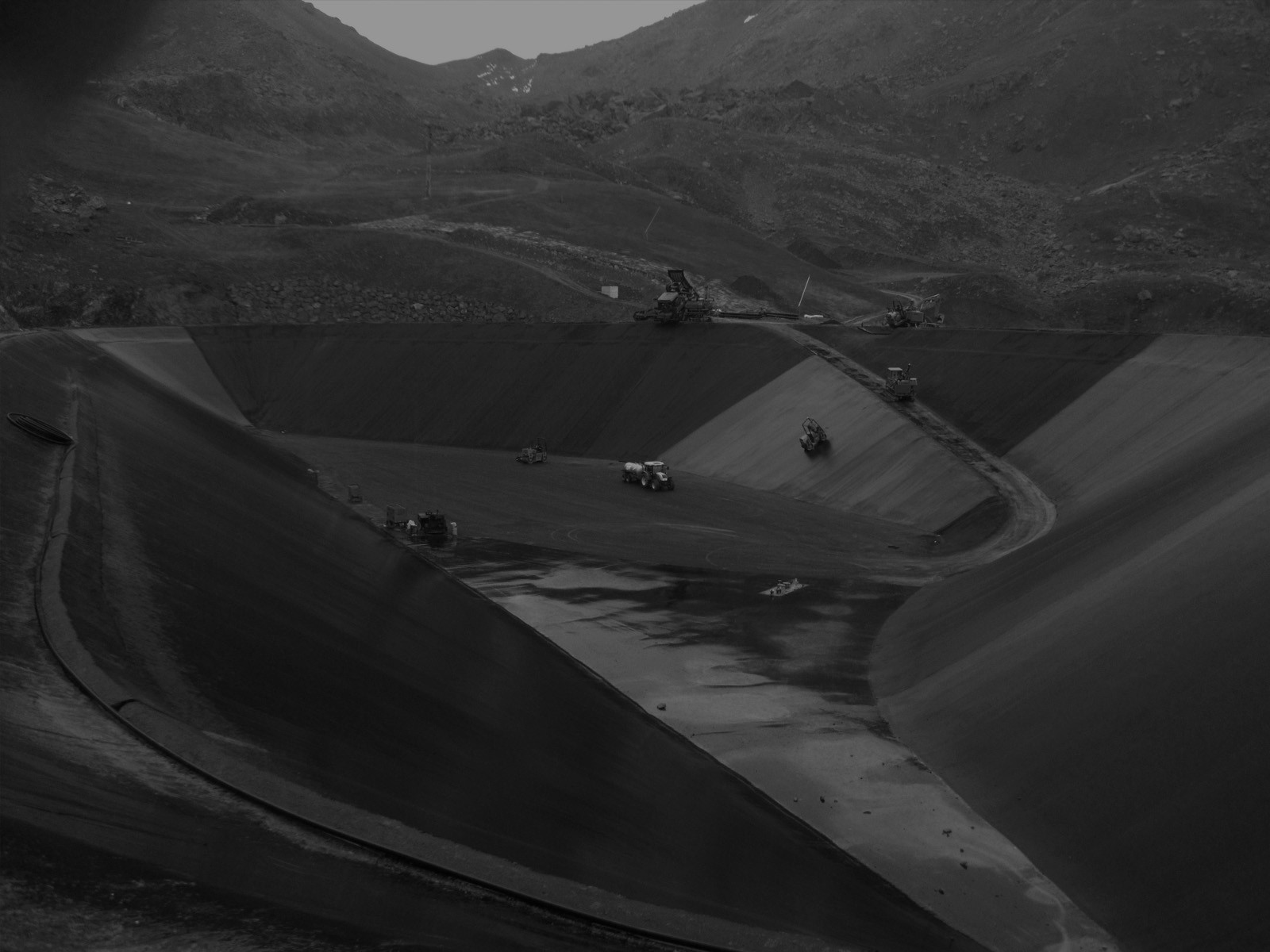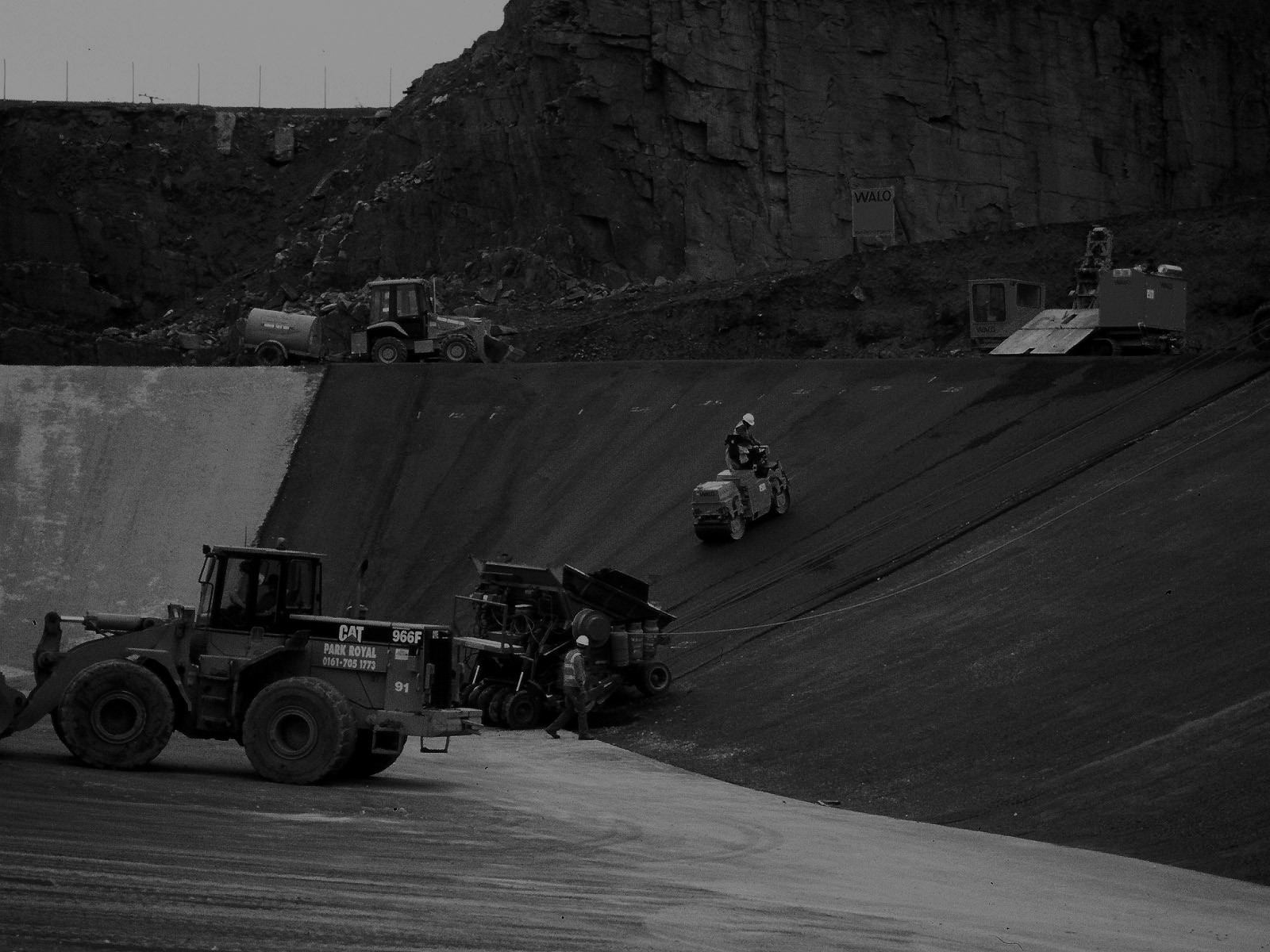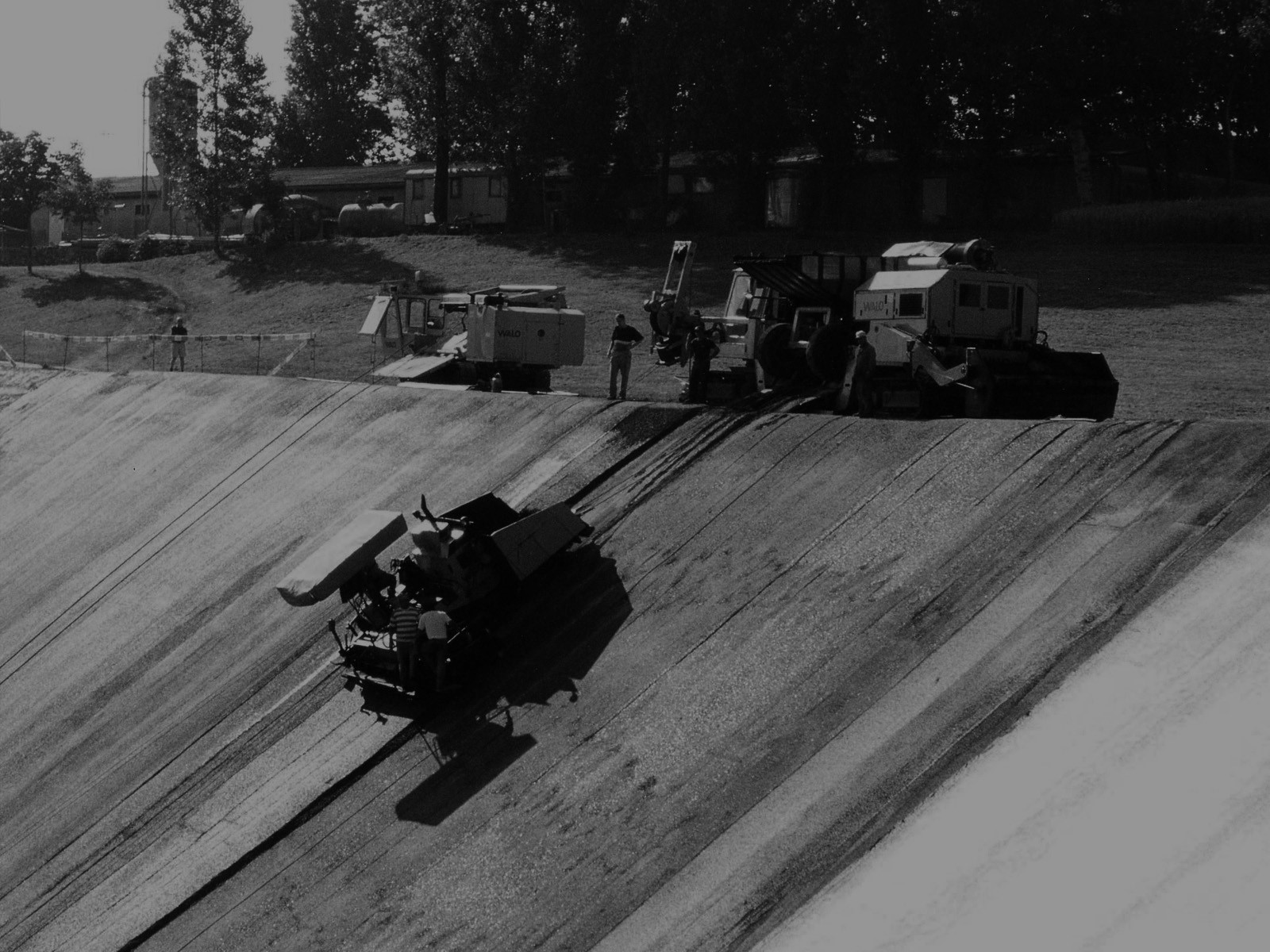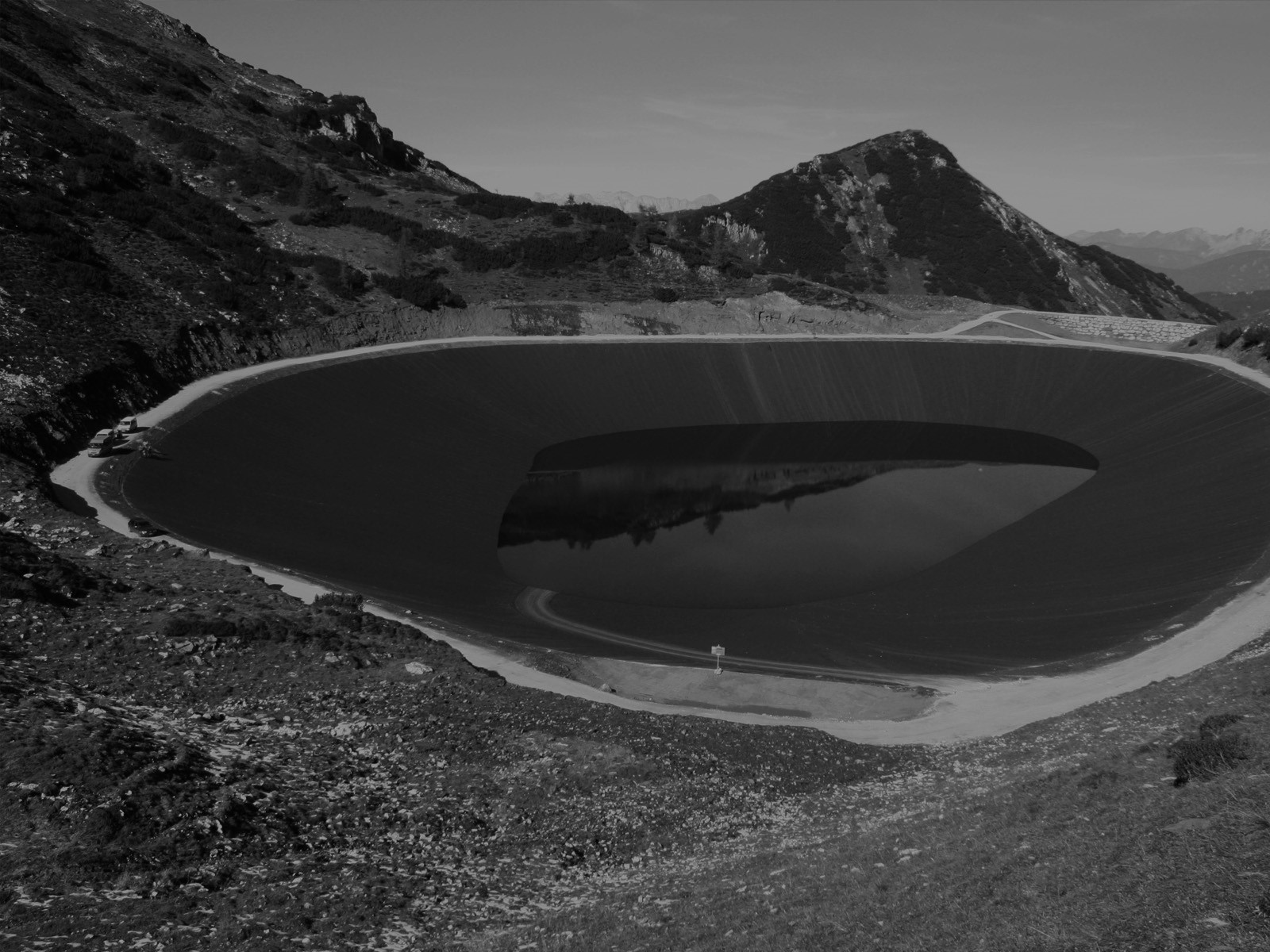Westmill landfill site
The Westmill Landfill site is located to the north west of Ware, Hertfordshire, UK. Operated by Biffa Waste Services Ltd, the site is located in a working sand and gravel pit and receives municipal waste from the south east region of the UK. This is mainly waste from households and businesses, along with some construction industry waste. The 38ha site is located on a chalk aquifer so environmental considerations are of utmost importance. Biffa chose Dense Asphaltic Concrete (DAC) as the site's lining system as it is the most robust and reliable system available. WALO’s Dense Asphaltic Concrete (DAC) is impermeable to leachate and methane so is ideal for complete containment of all materials that need to be impounded, such as landfill waste. Despite its impermeability, DAC is still very flexible and robust. This makes it particularly suitable for lining landfill cells as it can accommodate settlements of up to 10% and yet traffic can run on it immediately after laying without causing any damage. Since 2003, WALO has constructed 12 cells on the site using DAC with an overall capacity of over 2.5 million cubic metres.
The 13th cell, the latest and largest to be lined at Westmill, has a total surface area of 18,800 m2.
The lining system to the base, side slopes and intercell bunds of the cell comprised a 500mm clay lining layer, a 200 mm sub-base material layer, a 60mm asphaltic binder layer, an 80mm dense asphaltic concrete layer and a mastic seal coat. The lining system was formulated in WALO’s Zurich laboratory to a design mix specific to this project. During construction, ongoing testing of the asphalt was carried out by WALO’s on-site laboratory.
The works involved laying 2,500 m2 of the asphalt and mastic layers by hand on the intercell bund, laying 9,500m2 by paver and winch systems to the side slopes of the cell and 6,800m2 by paver to the base. The gradient of the side slopes was 1 in 2 with a maximum length of 60m. Once the lining works were completed, a leachate collection and removal system was installed.
The lining work was completed in just six weeks and the formation of the cell created a void space of 900,000 cubic metres for landfill.
